
Transit Briefs: Austin’s Project Connect, Metra, Metrolinx, Tri-Rail, Sound Transit, STM, WMATA
Written by Marybeth Luczak, Executive Editor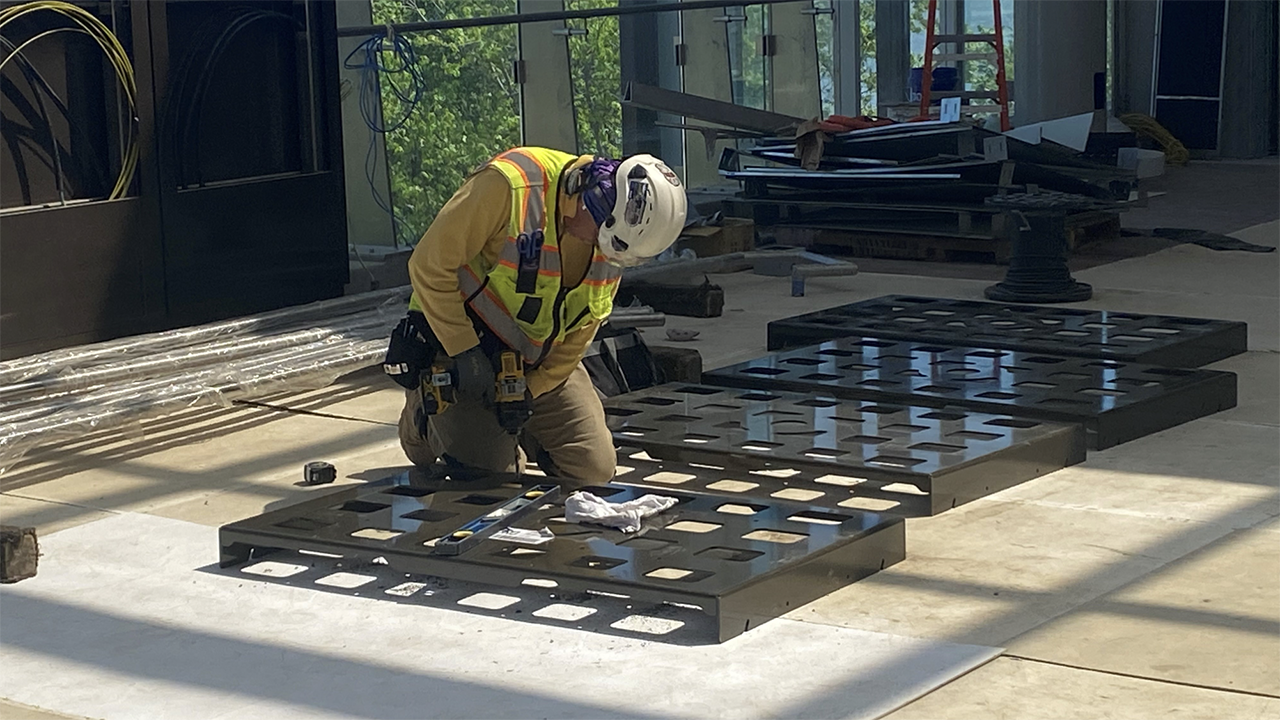
WMATA is readying for service its newest station: Potomac Yard in Alexandria, Va. (WMATA Photograph)
The Austin (Tex.) Transit Partnership awards light rail planning and design contracts for Project Connect. Also, Metra’s Chicagoland commuter rail stations will offer train-tracking and schedule updates on new video monitors; Metrolinx provides an official “first look” at GO Trains on the Davenport Diamond Guideway in Toronto; South Florida Regional Transportation Authority (SFRTA) reveals a new Tri-Rail train wrap; Seattle’s Sound Transit receives a loan to finance its South Sounder Access Improvement Project; residents of the agglomeration of Montréal aged 65 and over will soon ride free on Société de transport de Montréal (STM) transit services; and Washington Metropolitan Area Transit Authority (WMATA) announces the launch date of its 98th rapid transit station.
The Austin Transit Partnership (ATP) has awarded contracts to HDR Engineering Inc., AECOM Technical Services Inc. and HNTB Corporation for planning and design work on Project Connect, according to KXAN, part of the Nexstar Media Group.
The Project Connect System Plan includes a new light rail system and an expanded bus system with more routes; it was approved by Austin voters in November 2020.
KXAN reported on April 19 that HDR, under a $26 million contract, will “assist with program development and adhering to standards outlined in the National Environmental Policy Act (NEPA) requirements.” The firm will focus on ways “to maximize the Federal Transit Administration’s New Starts Capital Investment Grant Program, to help secure federal funding for the light rail system,” the media outlet said. ATP and HDR have set a goal that at least 10% of transportation-related construction project work will be handled by women-owned and minority-owned businesses.
AECOM will provide community engagement and design work planning services under a $3.7 million contract, and HNTB will provide conceptual design engineering under a $2.3 million contract, KXAN reported.
ATP is slated to announce in June the final design for the initial investment in light rail, according to the media outlet. In March it released five scaled-down route options.
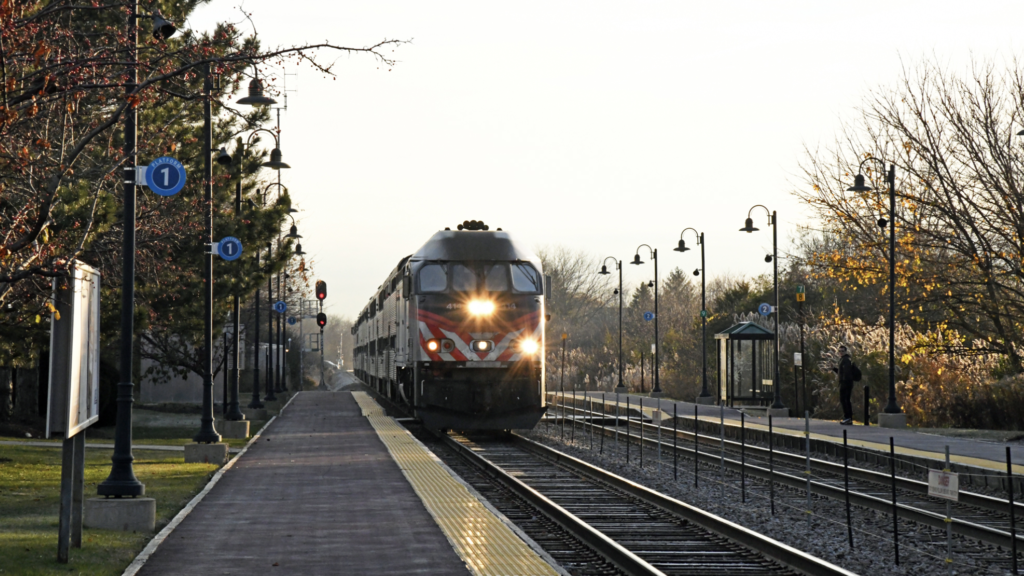
Metra on April 19 reported that its Board had approved an up to $20 million contract with Global Display Solutions Inc. of Rockford, Ill., to supply weather-proof LCD monitors of various sizes for installation at all 242 stations over the next three years. The monitors will provide riders with up-to-the-minute travel information and will replace outdated scrolling LED signs. The busiest stations will receive up to 10 monitors and the least busy stations will receive one to three, according to Metra.
“These new displays will be a major upgrade to our current station signs,” Metra CEO/Executive Director Jim Derwinski said. “They will provide train-tracking and schedule updates to waiting customers from our new train tracking system—the same information that is already available at metratracker.com, metra.com and the Ventra app. The signs will also display service alerts and other Metra information.”
Metrolinx’s Davenport Diamond Guideway, an elevated section track that allows GO Trains to travel above traffic and Canadian Pacific Kansas City (CPKC) freight trains, launched for service earlier this month. It is part of the Barrie GO Line from Bloor Street West to south of Davenport Road in Toronto’s west end.
The agency on April 19 released a video (above) of the trains running on the 0.86-mile (1.4-kilometer) guideway, whose highest elevation is 29.5 feet (9 meters) above the CPKC tracks.
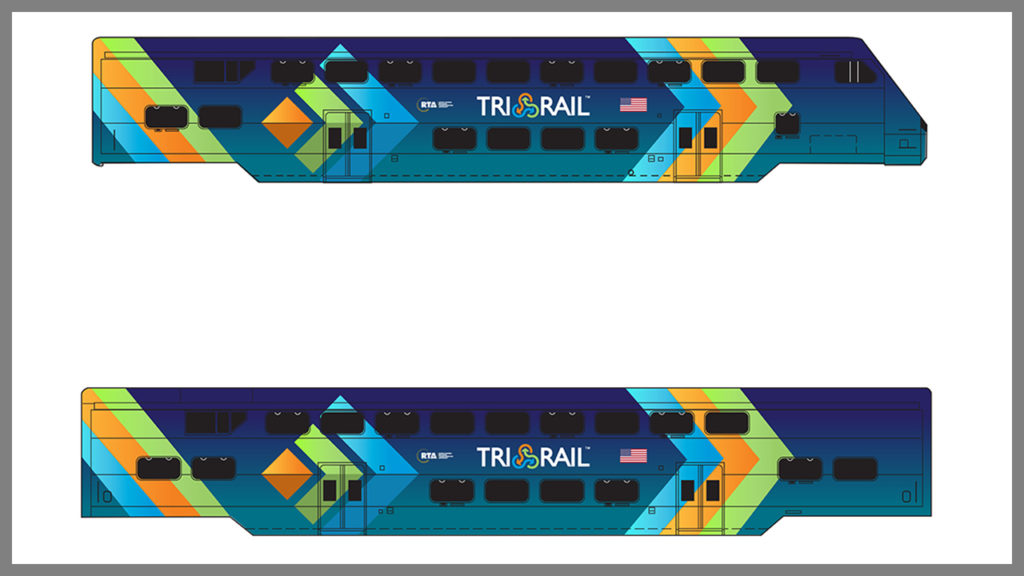
The SFRTA Governing Board has approved what will become the new look for Tri-Rail commuter rail trains. The “blue skies, white clouds and palm trees” wrap, unveiled in 2001, will be replaced with a new “on track” wrap that incorporates Tri-Rail’s logo colors, according to SFRTA. The new design, created by Goodman Public Relations, was selected in part “to make it easy to overlay advertising opportunities that can help garner additional revenue for the agency,” said Commissioner Raquel Regalado, SFRTA Governing Board Chair.
“The opportunity to change the design was presented at the SFRTA’s February board meeting, where the agency was programming work to re-wrap the exterior of 12 locomotives and 49 passenger vehicles that were due for replacement,” SFRTA said. “With the impending expansion of service into MiamiCentral Station and several new efforts to improve the train service, the Board felt it was a great opportunity to give Tri-Rail trains a fresh new design, and requested for SFRTA’s executive director to present design options for their review.”
Each board member provided input from several illustrations at the March Board meeting and arrived at a consensus.
Tri-Rail’s original fleet of cars was introduced in 1989 matching the green and white specifications of the cars used by GO Transit in Canada, and it wasn’t until 2000 that the tropical design was created (unveiled in 2001) to identify the system with its own brand.
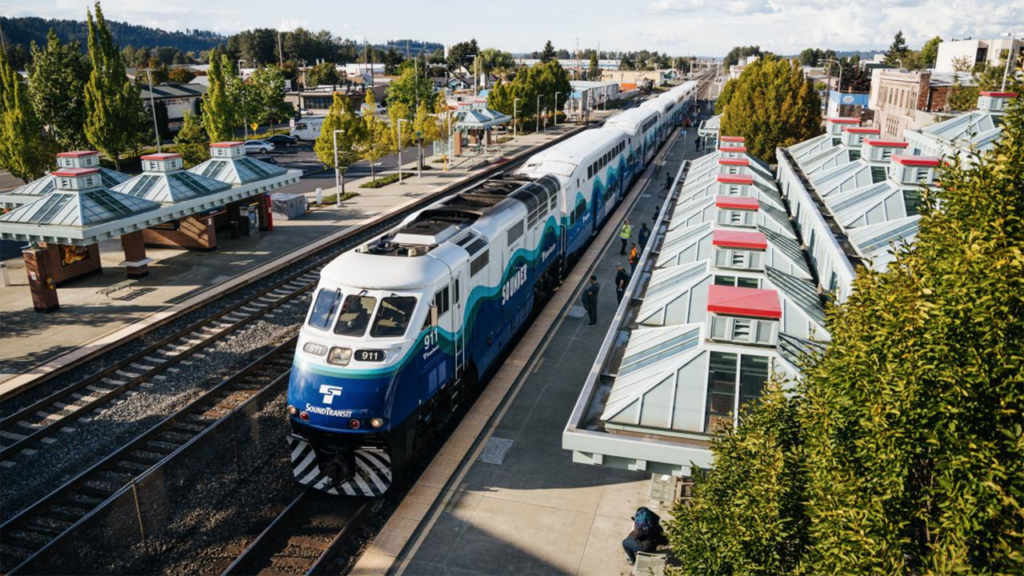
Sound Transit this month received a $154 million loan to finance the South Sounder Access Improvement Project, including construction of new parking garages at three Sounder commuter rail stations: Puyallup, Sumner and Auburn in Washington state. The loan comes from the U.S. Department of Transportation’s (USDOT) Railroad Rehabilitation & Improvement Financing (RRIF) program. The loan will reduce Sound Transit’s debt service payment by at least $53 million through 2046.
In addition to construction of the parking facilities, the project includes construction of sidewalks and ramps as well as street lighting improvements. It was approved by the region’s voters under the Sound Transit 2 ballot measure in 2008.
The Puyallup Station parking garage has 510 parking stalls and was opened to the public last month. The Sumner Station parking garage will include approximately 500 parking stalls; it is expected to open in 2025. The Auburn Station parking garage will include about 550 parking stalls; it is slated to open by 2027.
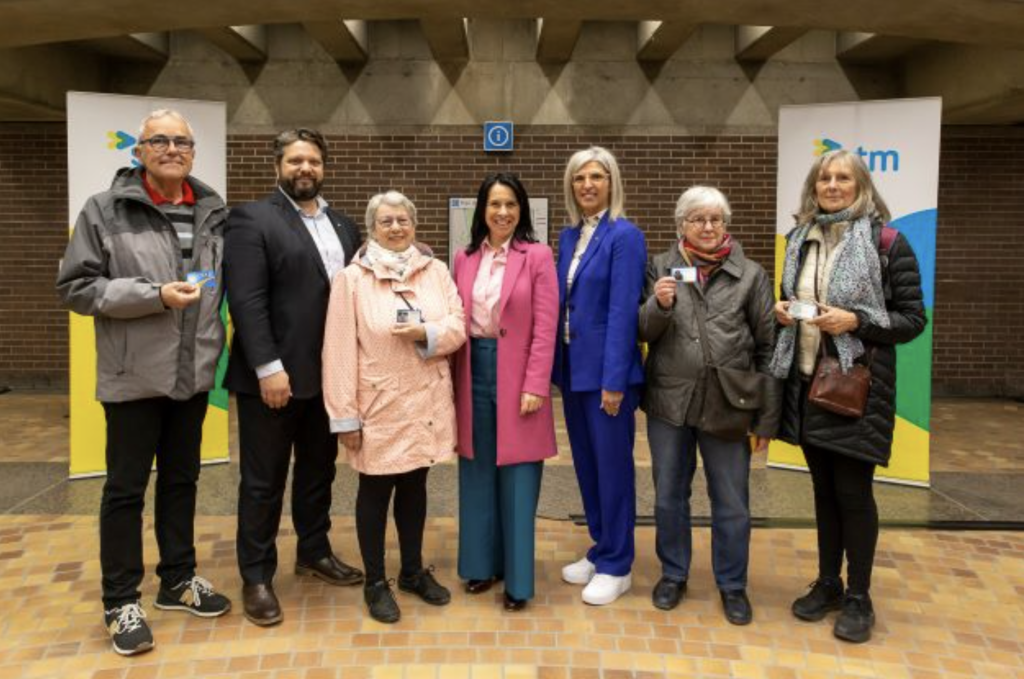
The city of Montréal and STM on April 19 began inviting residents of the agglomeration of Montréal aged 65 and over to load their OPUS cards with a Free 65+ All Modes A transit fare.
Starting July 1, the new “fare” will be valid for 24 months, allowing seniors to take public transit for free within Zone A (the island of Montréal), including bus, métro, paratransit, commuter train and the REM, once it is in service.
This measure, adopted by the city of Montreal in its 2022-2023 budget, “aims to help seniors fight inflation, while improving their quality of life and their transportation,” STM reported.
Photo OPUS cards constitute proof that the people using them are eligible for a reduced fare. Once loaded onto a photo OPUS card, the new fare will allow the cardholder to validate their own transit fare on different types of fare validation equipment, no matter what mode of transportation they are using for their trip. Riders must have a valid Free 65+ fare loaded and present their card during inspections, according to STM.
“This is excellent news,” said Éric Alan Caldwell, Chair of the STM Board of Directors, “because this incentive will encourage more people to take public transit and could also boost customer traffic without necessarily increasing the load during peak periods. Seniors play a vital role in not only their neighborhood life but throughout the city. We must meet their mobility needs, allowing them to take full part in all that the city has to offer.”
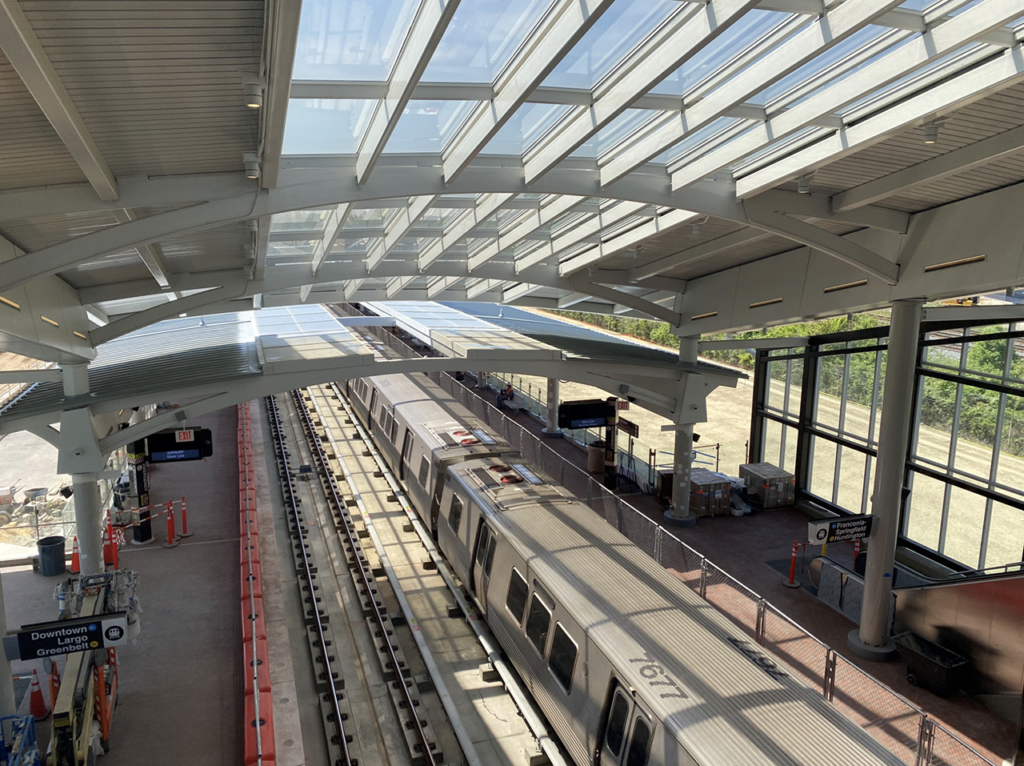
May 19 will be opening day for WMATA’s newest station, Potomac Yard in Alexandria, Va. Located between the Ronald Reagan Washington National Airport and Braddock Road stations, it will serve the Blue and Yellow rapid transit lines.
According to the transit authority, the station was initiated by the city of Alexandria and funded by tax revenues and developer contributions generated by planned new development in the Potomac Yard neighborhood, as well as state grants, loans and regional sources.
Work to tie-in the station and new tracks with the rest of the WMATA system concluded in November 2022, and trains are passing through the station without stopping as the remaining work continues. Safety reviews and staff training are to be conducted prior to launch, WMATA reported.
Potomac Yard will be one of the first rail stations in North America to receive Leadership in Energy & Environmental Design (LEED) certification from the U.S. Green Building Council, according to WMATA.
“Our team is working hard to put the finishing touches on the station, and we look forward to welcoming customers on May 19,” WMATA General Manager and CEO Randy Clarke said. “This station opens a multitude of possibilities for those who live and work in Alexandria by providing a gateway to the region and all the city has to offer. We appreciate the hard work and vision of the city to turn an idea more than 40-years in the making into reality, and we look forward to welcoming customers to our newest station.”



